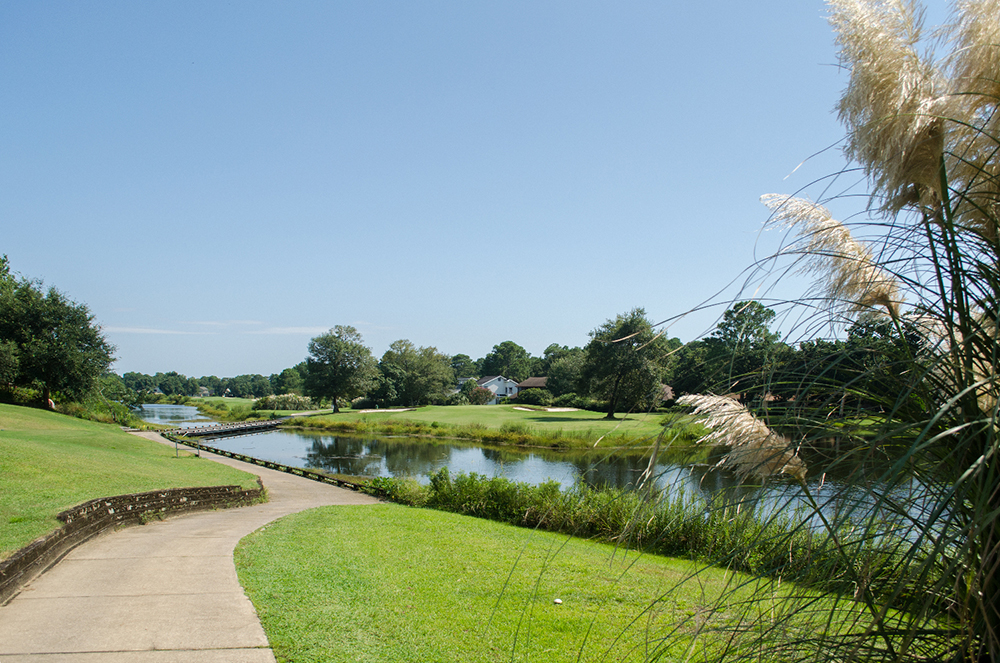Golfweek Features Jerry Pate Design and Teeth of the Dog - Read More
We’ve recently talked about the value proper irrigation design brings to a landscape and the importance of hiring a Certified Irrigation Designer. But today, we’re going to dive into a little more detail on irrigation itself. Did you know that there are actually four main methods of irrigation? Each has a time and place in which it is ideal, and a CID will be able to make the perfect choice. Still, it can be helpful for you to have a good idea of which would work best for your commercial landscape as you begin discussions with the pros. Let’s talk about them!
#1 Furrow, the Farmer’s Choice of Methods of Irrigation

We’re starting with this one because it probably isn’t what you would use for a commercial landscape, so we might as well get it out of the way. Furrow is one of the primary methods of irrigation, but it’s really just suited to farming. As an article from University of Missouri explains it, “Furrows are made with a hipper that forms parallel beds, and are usually spaced 30 or 38 inches apart. Water flows from a pump to furrows in lay-flat plastic pipes.”
It’s a brilliant approach for cultivating crops, but this is probably not the one you’ll select from the methods of irrigation for your landscape.
#2 Sprinkler Irrigation

Now this one is more up your alley! Sprinkler irrigation comprises exactly what its name suggests: a bunch of sprinklers! One of the great aspects of sprinkler irrigation is that it can be pretty varied. You can adjust the amount of water pressure easily and effectively, and it can be stationary or rotate. These options give you the opportunity to adjust based on the exacting needs of your landscape. That makes it one of the best methods of irrigation for commercial properties.
We have just one word from the wise on sprinkler systems: buildup of calcium and/or rust can clog sprinklers over time. If you live in a region with “hard” water, meaning that it naturally has higher volumes of minerals like calcium or magnesium, you might need to do frequent cleaning and replacement.
#3 Drip Irrigation

This is another of the methods of irrigation that is usually utilized by farmers. However, drip irrigation has also become popular as a tool for smaller community gardens. If it makes sense for your commercial landscape to have a little neighborhood shared garden, drip irrigation might be the way to go. It is a low-pressure way of supplying water through plastic tubing that is made with emitters that control the flow rate, ensuring it doesn’t get overwatered.
Because the tubes can be placed on the ground or buried beneath the soil’s surface, drip irrigation also offers a more aesthetically pleasing option for watering your beautiful plants. The only downside is that rodents have been known to chew on the pipes. But depending on your area and likelihood of pest issues, this might not deter you!
#4 Subirrigation: A Favorite Among the Methods of Irrigation

We’re ending on a high note! Subirrigation is one of our personal favorite methods of irrigation. Why? Because it is out of sight! Subirrigation delivers water to plants from beneath the soil surface, through a series of pipes and ditches. They are great for maintaining a water table to desired depth, which helps native plants thrive and prevents flooding.
That all sounds great, but we aren’t even finished. Subirrigation can be less labor-intensive over time and double as a drainage system. Of course, executing this demands a full overhaul of your landscape, but if you planned to do that anyway, it proves the best long-term option.
All in all, each of these four methods of irrigation has its perfect scenario. There are reasons to consider every one of them. We hope this post has helped you begin to brainstorm. Which will help your commercial landscape retain its fullest beauty over time? Only you and your Certified Irrigation Designer can decide! After all, water is arguably the most important factor in doing so.

